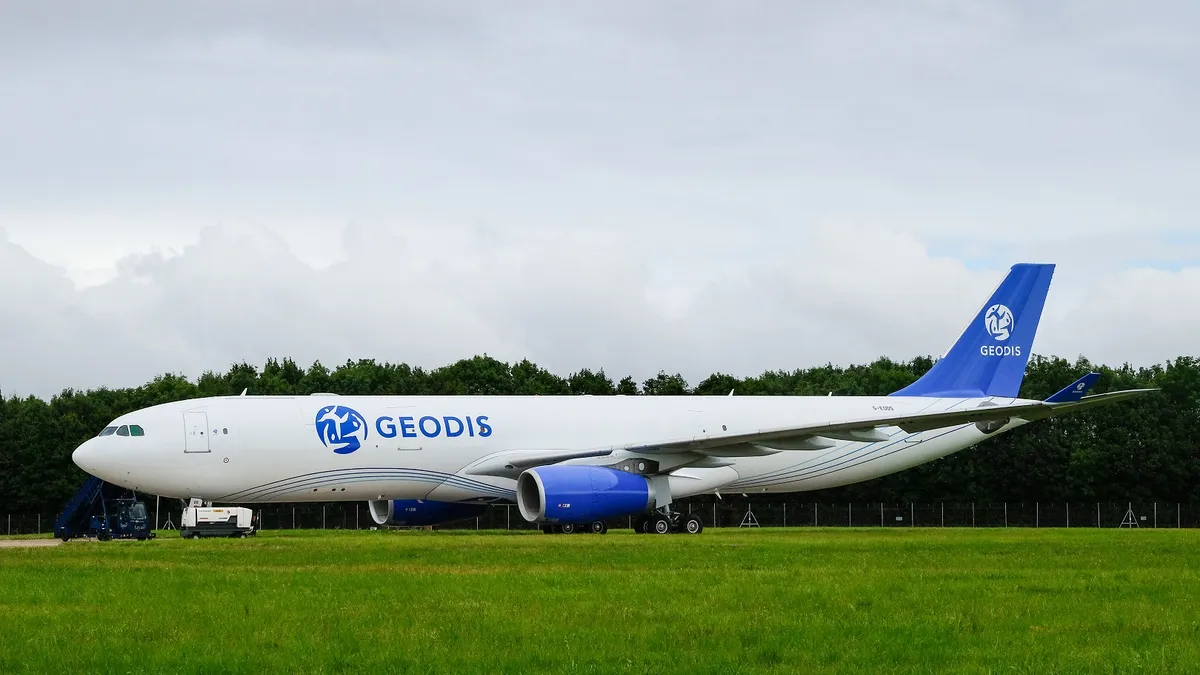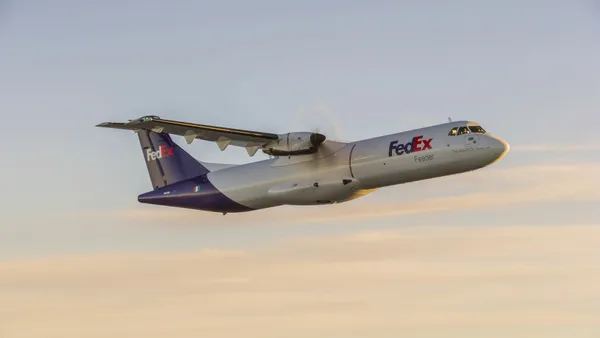With air cargo demand stabilizing and capacity up, shippers are reevaluating contracts as air freight rates drop, industry executives say.
Following COVID-19’s capacity-strapped market which put air carriers in the driver's seat, shippers are now in a position to negotiate their rates, Hellmann Worldwide Logistics Airfreight COO Jan Kleine-Lasthues told Supply Chain Dive in an interview.
“I believe we will see more and more RFQs coming out and shippers [trying] to secure the low rate level which we have at the moment for a longer period,” Kleine-Lasthues said. He anticipated possible contract agreements of six to 12 months.
Kleine-Lasthues noted that certain industries such like automotive and pharmaceuticals are especially looking for longer-term agreements right now, and he expects to see “more RFQs coming in the coming weeks.”
As customer contracts based on prior period rate levels expire, Geodis is also advising shippers to revert to long-term pricing agreements with a fluctuating fuel charge, EVP of Freight Forwarding Eric Martin-Neuville told Supply Chain Dive.
“There are limited risks in terms of access to capacity and thus the time is right for shippers to work on reinforcing the robustness and resiliency of their supply chain,” he said.
Xeneta’s Clive Data Services reported in June that freight forwarders, still feeling “handcuffed” by high airfreight rates and blocked space agreements with airlines, saw more shippers push to relaunch tenders and negotiate lower rates. During Q2, Clive saw six-month or longer contracts “gaining more ground.”
Amid shifting market conditions, shippers should remain focused on long-term relationships with carriers as capacity on certain trade routes may be vital in the near-term, said Peter Penseel, COO of air freight at CEVA Logistics. Over the past several years, volatility in the air freight market “placed a premium on relationships” when considering capacity, demand and freight rates.
“As markets swing back and forth, all sides at the table need to remain focused on the long-term partnership, prioritizing long-term stability and trust over short-term gains,” he said.
Rates have been on the decline due to falling demand and recovering capacity, with general spot rates down 41% YoY in July. Penseel expects rates to continue to decline globally, noting that “certain routes may be the exception, but given the current economic indicators, the second half of the year should remain on a similar trajectory as the first half.”
While promises of peak season demand typically drive a spike in rates and the need to secure capacity, most industry players anticipate no peak this year, or at the very least, a mini-peak, Penseel added.
“We expect certain trade lanes (Asia-North America and Asia-Europe trade lanes) to see a “mini-peak,” but we do not anticipate any strong movement on the demand side for the remainder of 2023,” he said. “The interaction between the recovering demand and the growing capacity will continue to apply pressure on both rates and contract agreements.”
Over the past year, industry players have been forced to rethink their post-pandemic air freight strategies to keep up with market changes like easing ocean disruptions. After 2021’s capacity crunch and surging demand led carriers and logistics providers to invest in their air networks, many are now cutting back on their aggressive expansion plans. Earlier this year, for instance, Amazon cut back on its air network operated through lessor Air Transport Services Group, while FedEx reduced its Express unit in a bid to right-size its air network.















